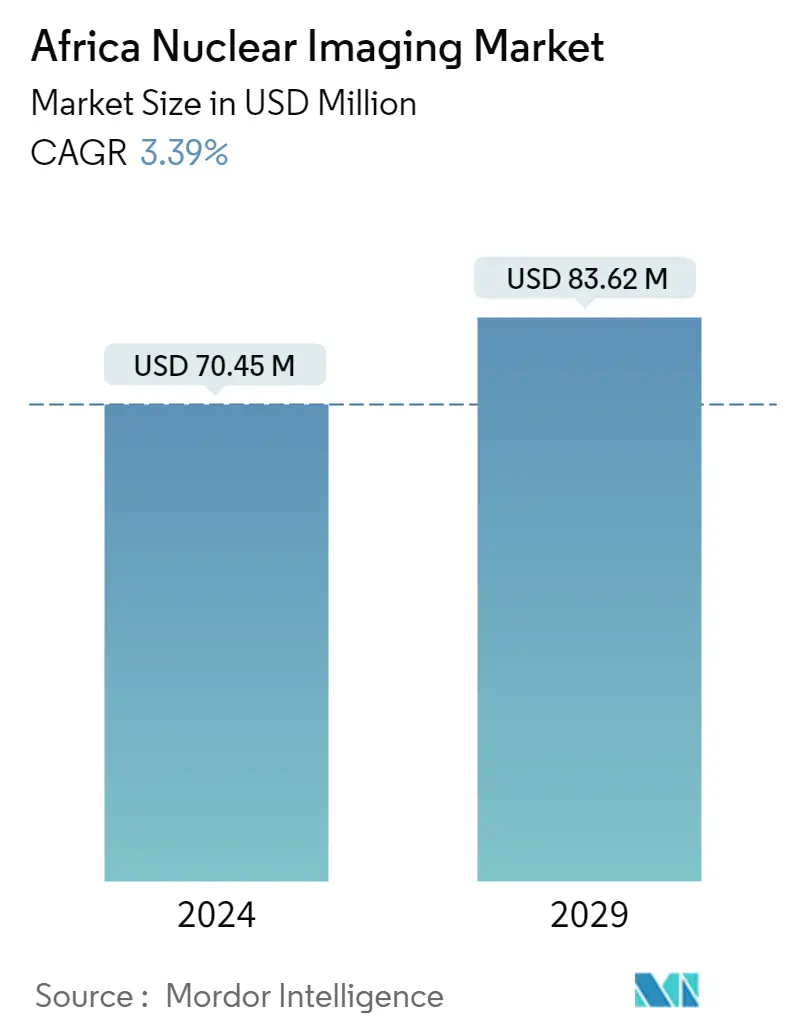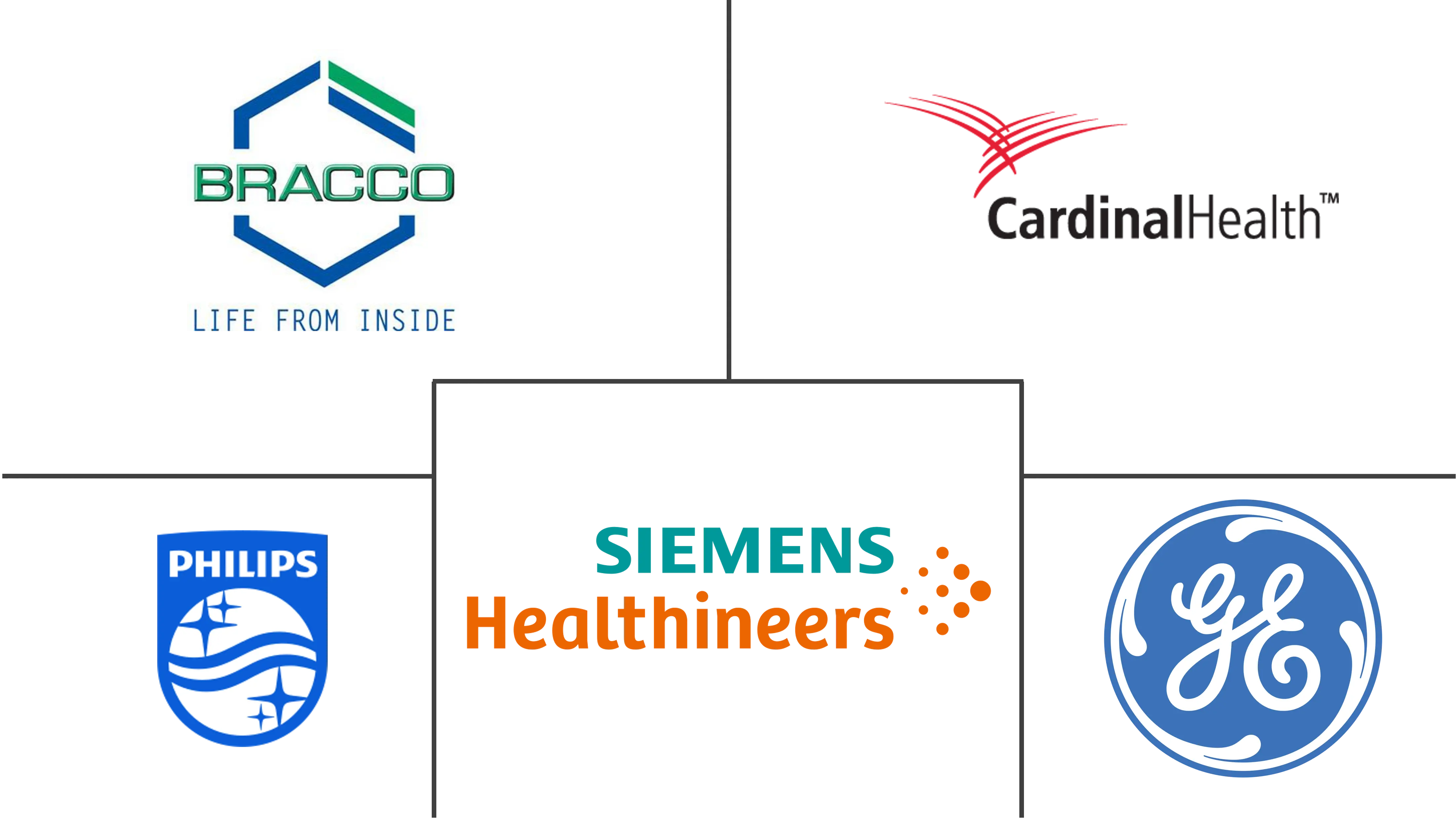Market Size of Africa Nuclear Imaging Industry

| Study Period | 2019 - 2029 |
| Base Year For Estimation | 2023 |
| Market Size (2024) | USD 70.45 Million |
| Market Size (2029) | USD 83.62 Million |
| CAGR (2024 - 2029) | 3.39 % |
| Market Concentration | Low |
Major Players
*Disclaimer: Major Players sorted in no particular order |
Need a report that reflects how COVID-19 has impacted this market and its growth?
Africa Nuclear Imaging Market Analysis
The Africa Nuclear Imaging Market size is estimated at USD 70.45 million in 2024, and is expected to reach USD 83.62 million by 2029, growing at a CAGR of 3.39% during the forecast period (2024-2029).
COVID-19 had a huge impact on patients and healthcare providers since the operations of hospitals as healthcare professionals prioritized COVID-19 procedures and postponed many elective surgeries and radiation treatments, due to which there was a decrease in the demand for related PET scans. As per the study published in June 2022 in PubMed, among the nuclear medicine procedures, oncological PET studies showed less of a decline in utilization compared to conventional nuclear medicine studies.
A gradual trend toward a return to the pre-COVID-19 status of the supply chains of radioisotopes, generators, and other essential materials was evident. Overall, in 2020, the pandemic-related challenges resulted in a significant decrease in nuclear medicine diagnostic and therapeutic procedures in Africa. Thus, COVID-19 impacted the nuclear imaging market as there were distribution channel disruptions for most radiopharmaceuticals, delays in clinical studies, postponement of various surgeries and imaging procedures, an increase in teleradiology, and several staff-related limitations.
Currently, the market studied has reached its pre-pandemic nature in terms of demand for nuclear imaging as COVID-19-related restrictions have been eased. Moreover, it is believed that the market will be registering significant growth in the coming years due to the rapid innovations and advancements in nuclear imaging coupled with a rise in chronic diseases.
Factors that are propelling the growth of the market include technological advancements and increasing chronic diseases which utilize nuclear imaging for diagnostic applications.
An increase in number of neurological diseases like dementia and Alzheimers is expected to drive the market growth significantly due to the increase in the utilization of nuclear imaging for early detection and further treatments. For instance, as per the World Alzheimer Report 2021, it was estimated that up to 75% of those living with dementia who was underdiagnosed were mostly live in low- and middle-income countries including African countries. Hence, to cope with the rising prevalence of neurological complications in Africa, the early diagnosis of risk factors is being broadly carried out, which is expected to fuel market growth. Moreover, In February 2022, the International Atomic Energy Agency (IAEA) launched a plan to tackle a severe shortage of cancer care capacity in many countries, with an initial focus on Africa, where people often die from the disease due to the lack of access to potentially life-saving nuclear medicine and radiotherapy.
Additionally, technological advancement in nuclear imaging in Africa region is expected to increase the market growth over the forecast period. For instance, according to the article published in October 2021 in PubMed, the future of nuclear medicine services in African member states is thought to be dependent on the overall development of all crucial elements at the regional level, particularly through the use of a strategy that maximizes the transport of radiopharmaceuticals and tracers for therapy or non-routine diagnosis even in nations that do not produce them. To match the greater integration of nuclear medicine in the development of national healthcare systems, more SPECT and PET scanners are likely to therefore be constructed throughout Africa in the future decades, and more skilled personnel are expected to be trained.
Hence, the rise in chronic diseases which utilize nuclear imaging and the surge in technological advances in nuclear imaging across the country are expected to drive the market growth over the forecast period. However, regulatory issues and a lack of reimbursement may restrain the market's growth.
